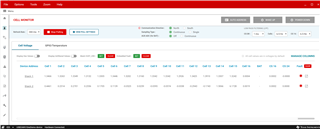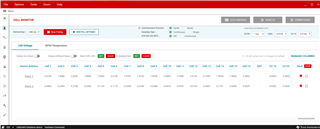Other Parts Discussed in Thread: BQ79600EVM, USB2ANY
Hi,
We are working with BQ79656 IC for battery balancing/voltage sense. The evaluation module BQ79656EVM and BQ79600EVM have been tested and validated with BQAutoEval 1.0.4 software. The BQ79656EVM is able to wake up, auto addressed, and read voltage present on resistor ladder connected to cell inputs.
With above evaluation, we decided to move forward with custom PCB design based on BQ79656EVM. With the same setup as above, now with BQ79656 replaced with our custom PCB, we are unable to properly communicate with the custom BQ79656 PCB.
Key observations with BQ79600EVM connected to custom BQ79656 PCB:
- Wake up function works, the BQ79600 is able to wake the custom PCB, this is confirmed by LED connected to AVDD being lit up when wake up is pressed on BQAutoEval
- Auto address function on BQAutoEval software does not work, the custom PCB is not detected on device selected drop down, as opposed to BQ79656EVM where it shows up as Stack 1
- Under cell monitoring window on BQAutoEval, "start polling button" is frozen, and there aren't any devices shown, as opposed to BQ79656EVM the device shows with voltage reading once polling button is pressed
- All the voltages i.e. NEG5V, LDOIN, NPNB, BAT, REFHP, AVDD, CVDD, DVDD have been verified on custom PCB and compared with BQ79656EVM, they are correct
- One item that caught my attention was under the "Device Configuration Details" window that pops up upon first launch of BQAutoEval, there isn't any option to select BQ79656, the closest option is BQ7965x, which is fair as it might be same across other variants of this IC and it works fine with BQ79656EVM.
What is interesting is on BQ79656EVM PCB, the IC package is actually labelled BQ7965x instead of BQ79656; however, the ICs we have purchased from TI are labelled correctly i.e. BQ79656.
Could it be the device select file BQ7965x on BQAutoEval software is different to what device select file of BQ79656 should be? The root cause maybe some minor difference between the two.
Please let me know if you require any further details about the setup or have any other questions.
Thanks


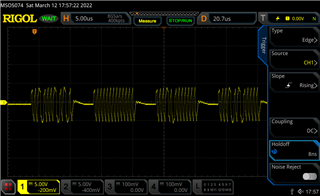
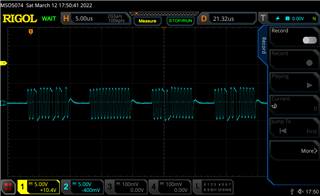
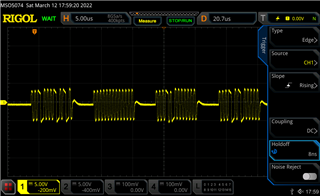
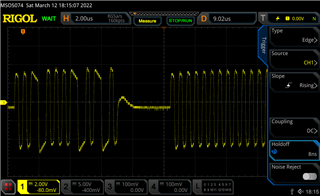
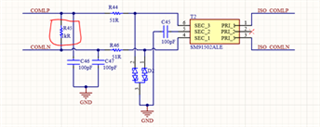
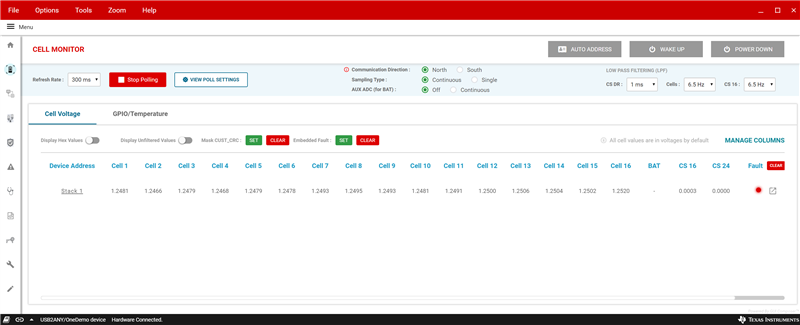 USB2ANY- BQ79600EVM, BQ79600EVM COMH - BQ79656EVM COML: Both wake up, auto address works, polling works, power down works
USB2ANY- BQ79600EVM, BQ79600EVM COMH - BQ79656EVM COML: Both wake up, auto address works, polling works, power down works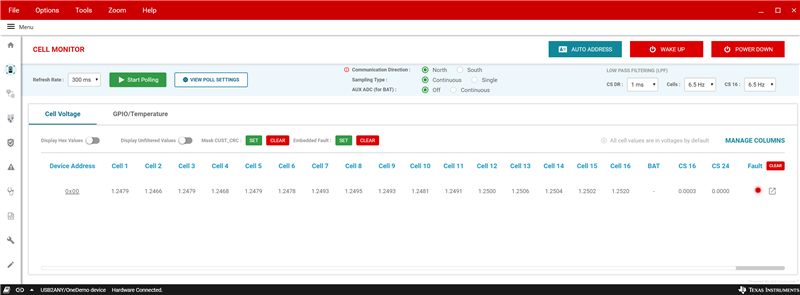 USB2ANY - BQ79656EVM: Wake up works, auto address works, polling works, shut down works
USB2ANY - BQ79656EVM: Wake up works, auto address works, polling works, shut down works 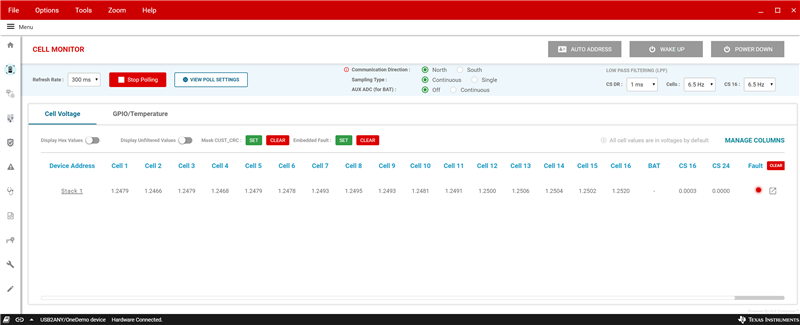 USB2ANY- BQ79600EVM, BQ79600EVM COMH - BQ79656EVM COML, BQ79656EVM COMH - BMM COML: Wake up works on all, Auto address only shows single stack, Polling work only on BQ79656EVM (confirmed by toggling S1, S2 switches), Power down works on BQ79600EVM and BQ79656EVM but not BMM.
USB2ANY- BQ79600EVM, BQ79600EVM COMH - BQ79656EVM COML, BQ79656EVM COMH - BMM COML: Wake up works on all, Auto address only shows single stack, Polling work only on BQ79656EVM (confirmed by toggling S1, S2 switches), Power down works on BQ79600EVM and BQ79656EVM but not BMM.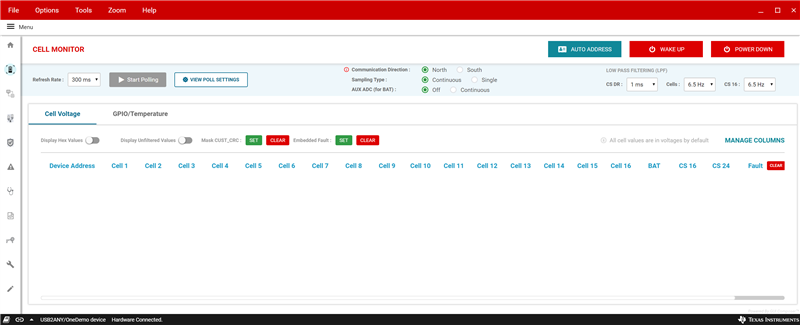 USB2ANY - BQ79600EVM, BQ79600EVM COMH - BMM COML, BMM COMH - BQ79656EVM COML: Wake up on BQ79600EVM and BMM (no wake up on BQ79656EVM), auto address nothing picked up, shut down only BQ79600EVM
USB2ANY - BQ79600EVM, BQ79600EVM COMH - BMM COML, BMM COMH - BQ79656EVM COML: Wake up on BQ79600EVM and BMM (no wake up on BQ79656EVM), auto address nothing picked up, shut down only BQ79600EVM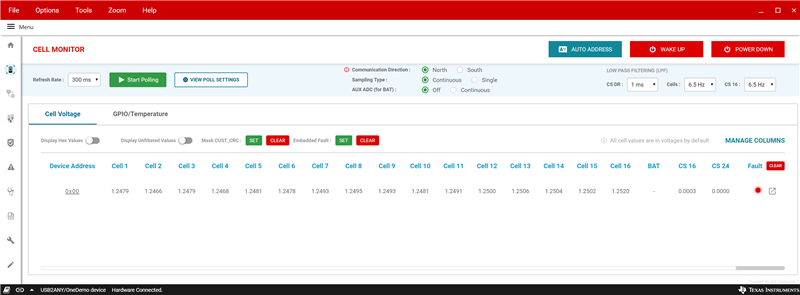 USB2ANY - BQ79656EVM, BQ79656EVM COMH - BMM COML: Wake up works on both, auto address only gets 1 device, polling works on BQ79656EVM only (tested switch S1 and S2), shutdown works only on BQ79656EVM
USB2ANY - BQ79656EVM, BQ79656EVM COMH - BMM COML: Wake up works on both, auto address only gets 1 device, polling works on BQ79656EVM only (tested switch S1 and S2), shutdown works only on BQ79656EVM
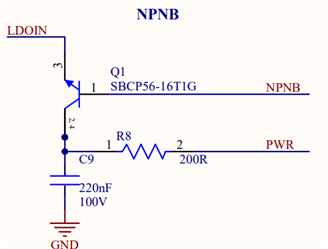
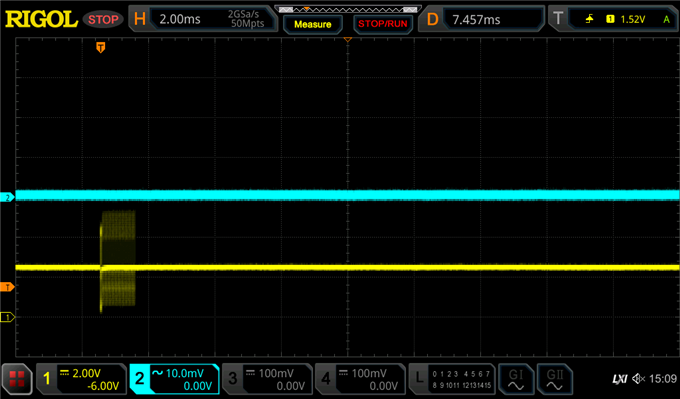
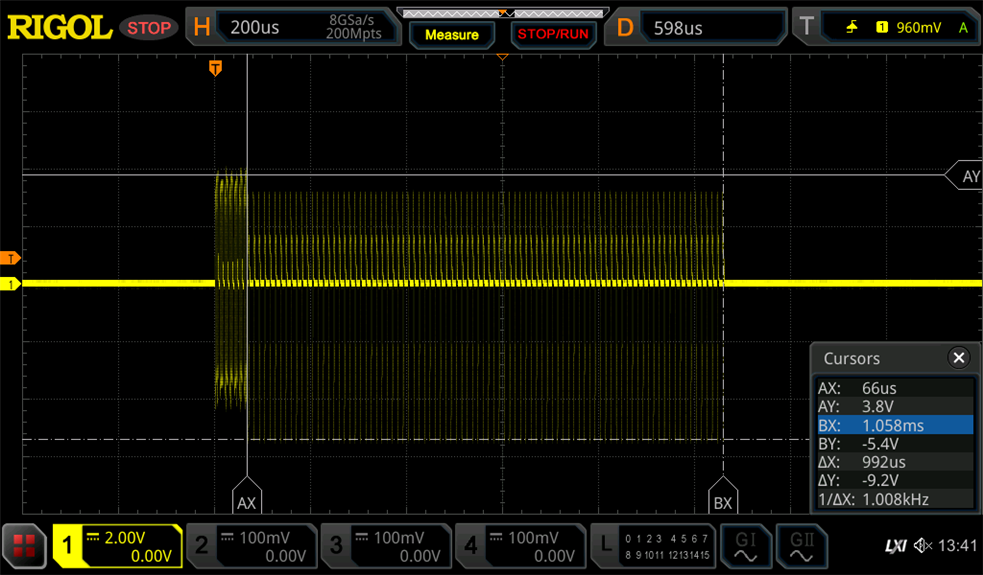 Complete wakeup signal
Complete wakeup signal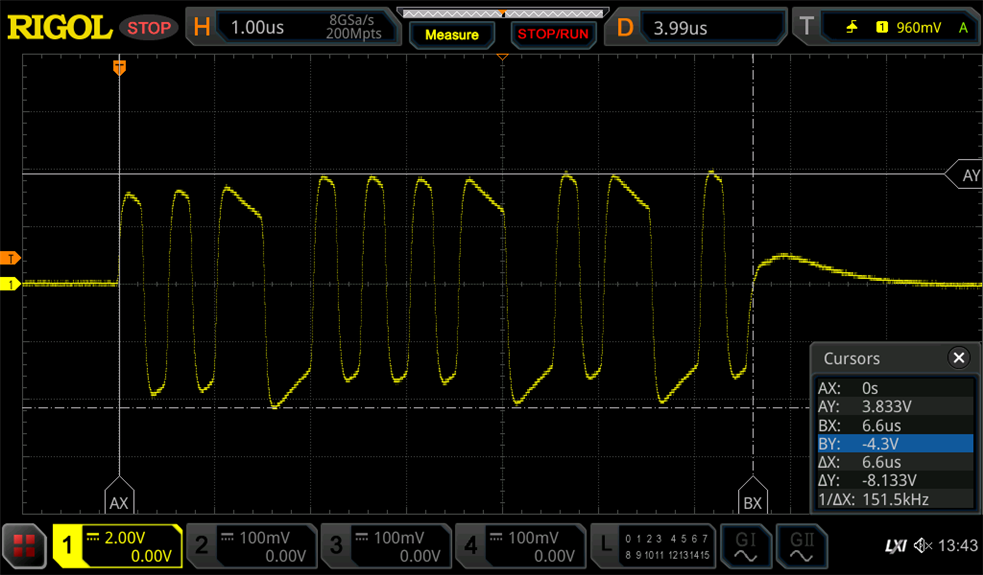 Message data packet
Message data packet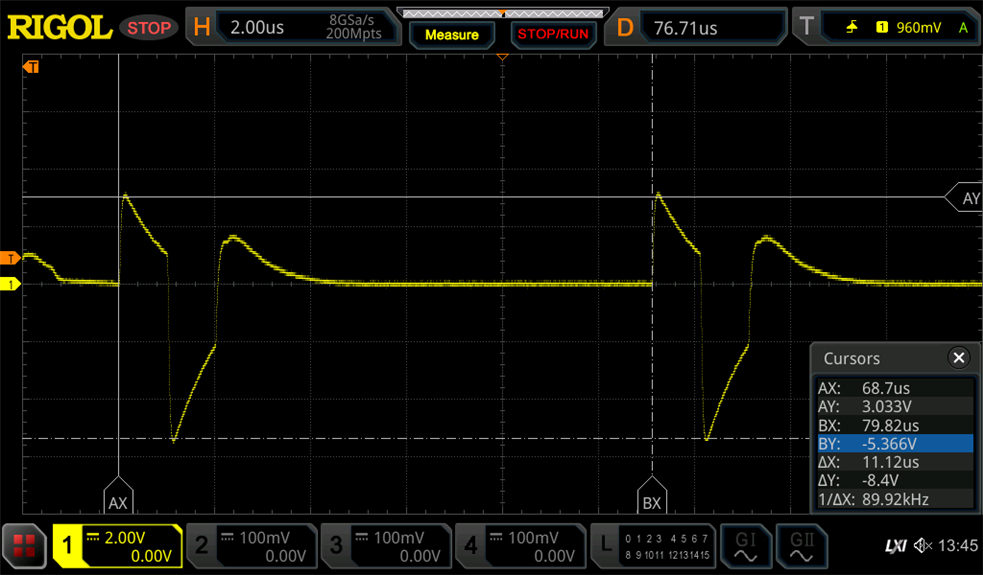 Wakeup tone waveform
Wakeup tone waveform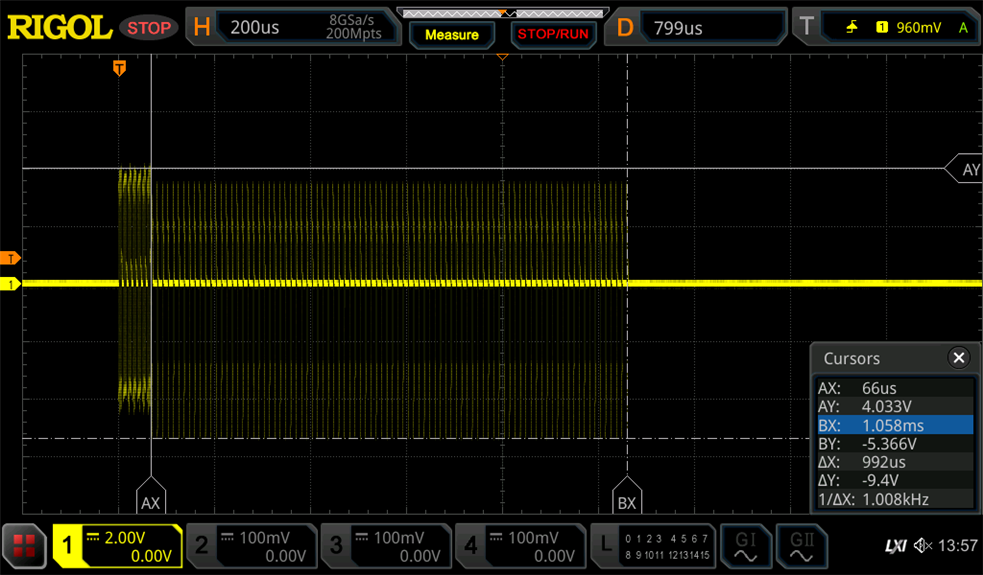 Complete wakeup signal
Complete wakeup signal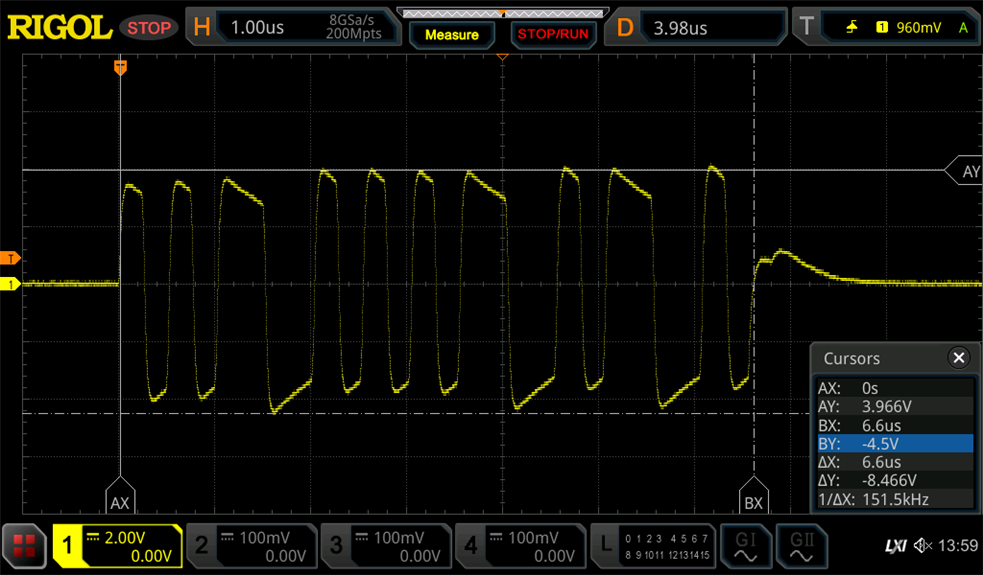 Message data packet
Message data packet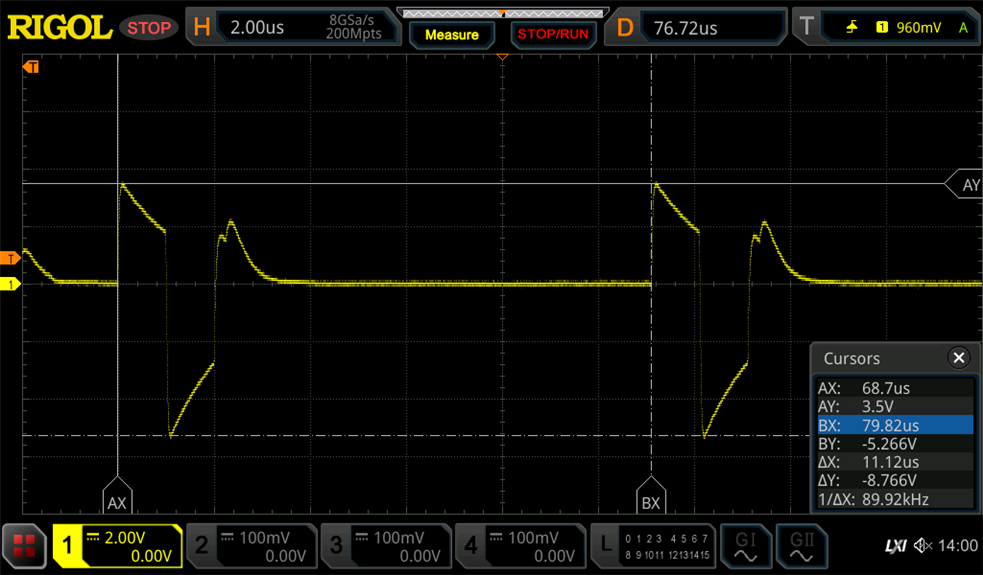 Wakeup tone
Wakeup tone